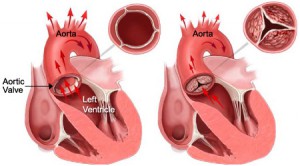 A 79-year-old heart patient was running out of options. She desperately needed a new heart valve but was too frail for conventional surgery. a new way to implant the valve, and the patient came through the procedure with flying colors. Now, the pioneering surgery could save thousands of other seniors who have been considered too weak for open-heart surgery.
A 79-year-old heart patient was running out of options. She desperately needed a new heart valve but was too frail for conventional surgery. a new way to implant the valve, and the patient came through the procedure with flying colors. Now, the pioneering surgery could save thousands of other seniors who have been considered too weak for open-heart surgery.
Since it’s not a traditional procedure, we’re really offering it only to people who have no other options and we’re being very careful. Having said that, we’ve already seen six patients that were candidates and we’ve treated five others, again, with very good success. So we’re going to be continuing to do this and we’re going to invite other centers around the county to learn how to do the procedure.
 About 5 million are diagnosed with heart valve disease every year, notes a medical director at the Center for Structural Heart Disease Of those, tens of thousands undergo surgery for a condition called “aortic stenosis” — a narrowing of the aortic valve that causes it to stay closed. But the new technique helped pioneer offers an alternative approach that could help many of those individuals who aren’t good candidates for open-heart surgery. The technique builds on a new approach known as a “transcaval” procedure, which involves threading a guide wire through a vein —typically through the leg — and passing it into the main artery of the body, the abdominal aorta. Then the openings of the vein and artery are gradually widened to allow a catheter to continue to the heart and implant the new artificial valve.
About 5 million are diagnosed with heart valve disease every year, notes a medical director at the Center for Structural Heart Disease Of those, tens of thousands undergo surgery for a condition called “aortic stenosis” — a narrowing of the aortic valve that causes it to stay closed. But the new technique helped pioneer offers an alternative approach that could help many of those individuals who aren’t good candidates for open-heart surgery. The technique builds on a new approach known as a “transcaval” procedure, which involves threading a guide wire through a vein —typically through the leg — and passing it into the main artery of the body, the abdominal aorta. Then the openings of the vein and artery are gradually widened to allow a catheter to continue to the heart and implant the new artificial valve.
The catheter is then removed and plugs are inserted in the artery and the vein to close the holes made for the temporary connection of the two major blood vessels. this new procedure could help 25,000-50,000 patients a year. But for many women, the blood vessels in the legs are too small for the procedure to work.
They’re probably about 150,000 aortic valve operations a year that are being don e — open heart operations, “Many of those patients now can be treated with these nonsurgical valves except that, in particular, in women, the blood vessels in the legs are too small to allow the catheters to go up. The 79-year-old heart patient he recently treated with the technique had previously had surgery to implant a pig valve and it worked fine for many years. But unfortunately, the tissue started to fall apart and the patient was deteriorating rapidly.
e — open heart operations, “Many of those patients now can be treated with these nonsurgical valves except that, in particular, in women, the blood vessels in the legs are too small to allow the catheters to go up. The 79-year-old heart patient he recently treated with the technique had previously had surgery to implant a pig valve and it worked fine for many years. But unfortunately, the tissue started to fall apart and the patient was deteriorating rapidly.
There are other techniques of being able to fix it — perhaps open-heart operations again — but she wasn’t eligible. And so she was in our recovery room and deteriorating every day and so we came up with a new technique for being able to put the valve in by a new method of crossing from the main vein in the stomach across to the aorta and then putting the valve up into the heart through the aorta and repairing it. It’s never been done before in humans and has actually worked very dramatically and very successfully.
To know more about Heart Surgery in India please visit this link: https://safemedtrip.com/medical-services/heart-surgery-in-india.html

 Click to WhatsApp
Click to WhatsApp +91-9899993637
+91-9899993637



